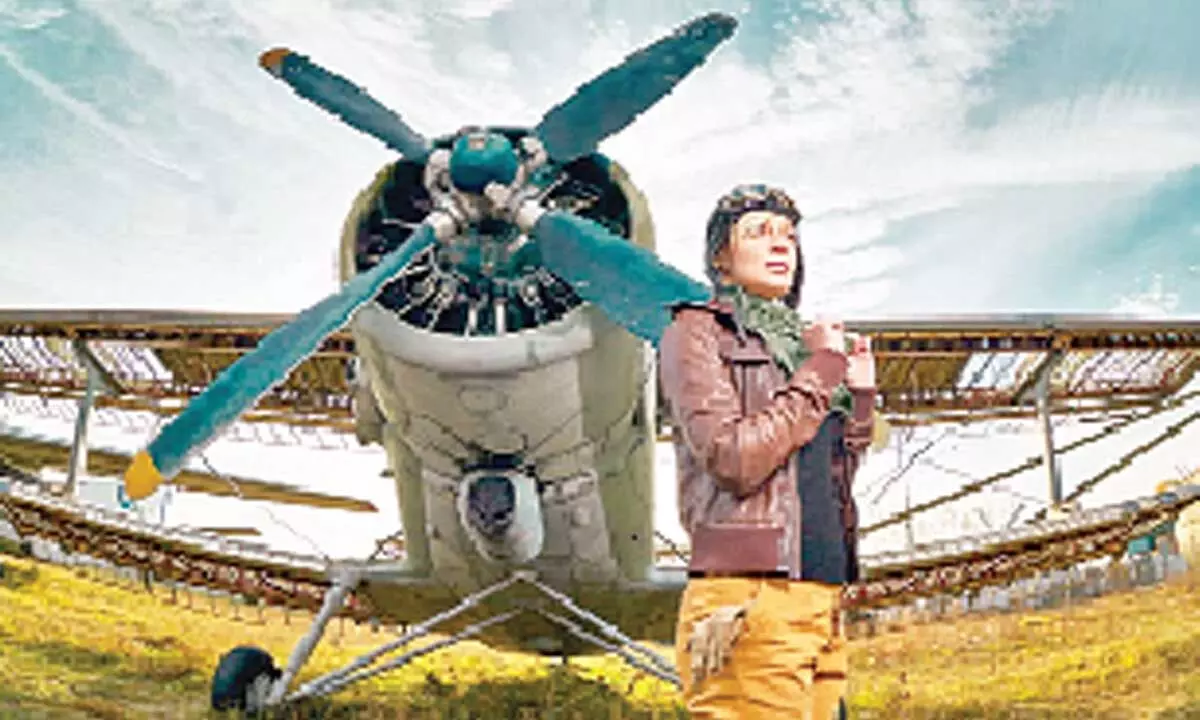Women in top jobs can work wonders for aviation industry
The main challenges for women in the industry are discrimination and lack of adequate representation
image for illustrative purpose

This year’s Women of Aviation Worldwide Week (WOAW), which is celebrated annually to coincide with the International Women’s Day, will conclude on March 12. The aviation industry consists of various activities and industries related to aircraft and air traffic control. Most aircraft in aviation are utilized for air travel or military warfare.
WOAW is a global aviation awareness week held for women and young girls to commemorate issuance of the first female pilot’s license in 1910. WOAW is also a means to address gender discrimination in the aviation industry.
The week commemorates the licensing of the first female pilot as a first step in addressing gender discrimination in the industry. In 2010, a pilot and aviation instructor, Mireille Goyer, launched the ‘Fly it Forward’ initiative to encourage more pilots worldwide to introduce girls of all ages to aviation.
Diversity and inclusiveness are fast becoming the focus for workforces around the world, but one of the major industries lacking in this area is aviation. As there is a real need for innovation and meeting the needs of one of the widest consumer bases globally, it is imperative for airlines to take up significant action.
The top challenges for women in this industry are discrimination and the overall lack of representation. However, there seems to be some progress in European and Middle East countries. For example, in 2021, India was leading the way for female pilots with around 12.4 per cent of all pilots employed being women. At the same time, this number was only 4.7 per cent in the UK.
The aviation sector still has one of the poorest gender balances overall, and the International Air Transport Association (IATA) reports that the proportion of women holding C-level roles in the industry is just three per cent. With the general sentiment being that women’s interests and capabilities simply don’t align with the skills needed to become a pilot, the sad irony is that outdated gender stereotypes are impacting women’s career progression, despite the growing number of female representatives in similar skill fields.
In a more general sense, the aviation industry is one of the biggest areas where relying on consumer sentiment and innovation will be pivotal in the years ahead. Advancements in tech have gradually started to rule out a large portion of the industry alums, older white males, and as many are now beginning to reach retirement age, the threat of shortage is very much real. This is the perfect time to integrate younger, more diverse demographics into the fold, as this can help to bring fresh new perspectives where many are simply becoming outdated. Airlines that promote female pilots are already seeing an increase in customer connections, safety and profitability – and this will only continue to improve in the future.
For many years the airline industry has been recognized as a highly male-dominated and male-centred industry. The role played by female employees has not been worth mentioning. Most of the female employees in the industry are visible mostly in cabins and customer service counters. Almost all core jobs have been performed by males. Today the entire scenario is changing and the industry is undergoing dynamic changes.
The industry is inviting the services of female employees into core operations like aircraft engineering and flying. Even women are evincing interest in pursuing careers as aircraft engineers and pilots. The push for increased numbers of women in the commercial airline pilot pool is continuing to grow, with initiatives and scholarships being launched in various parts of the world.
Women in Aviation International India (WAI) are front and centre in the drive. It is a non-profit organisation that works for the encouragement and advancement of women in the industry not only in India but all over the world. WAI India also offers educational outreach programs to educators, industry members and young people besides promoting public understanding of the accomplishments and contributions of women in aviation.
The percentage of female pilots in India is twice as high as in most western countries, including in the United States and Australia, which shows the Indian aviation industry’s rapid growth.
Globally, less than six per cent of pilots are women, according to the International Society of Women Airline Pilots. IndiGo has 14.9 percent of its pilots as women, far ahead of the global average of 3.2 percent, as per the International Society of Women Airline Pilots. In SpiceJet Ltd, 14 per cent of pilots are women and there is a mandate to grow that to 33 per cent in the next three years. These are all welcome decisions.

